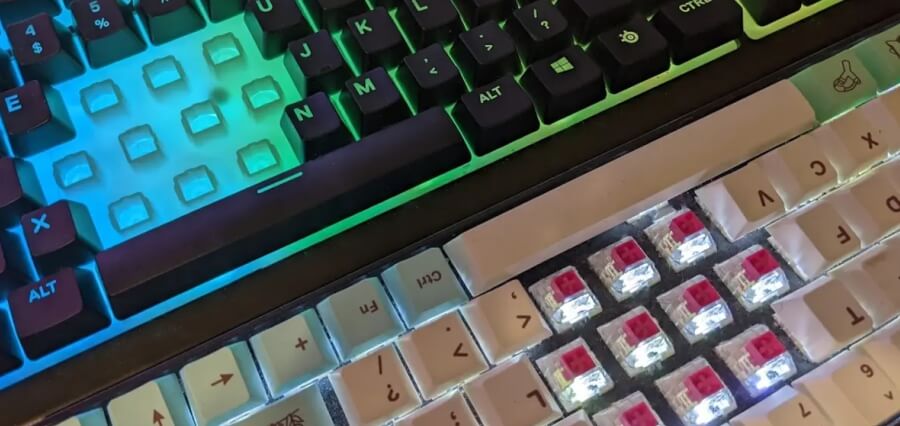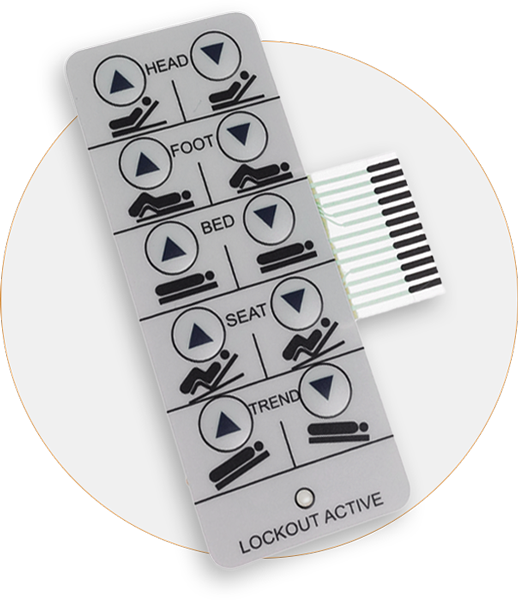The Function of a Membrane Switch in Modern Touch Interfaces and Controls
Wiki Article
Exactly How Membrane Changes Contribute to the Longevity of Electronic Control Panels
Membrane switches play a vital duty in improving the sturdiness of electronic control board, mostly via their multi-layered building which supplies reliable security versus environmental factors such as wetness and dirt. This style not just minimizes the risk of circuit damages and deterioration yet additionally promotes convenience of maintenance as a result of its seamless surface. The lack of moving parts substantially lowers the probability of mechanical failures, making membrane switches ideal for requiring applications. The effects of these attributes expand past simple security, raising concerns concerning their wider influence on performance and customer experience.Meaning of Membrane Buttons

Membrane layer buttons are created to be slim and lightweight, making them suitable for applications where space is restricted. They can be manufactured in various forms, dimensions, and colors, providing flexibility in style that meets aesthetic and functional demands. Furthermore, membrane buttons can incorporate different technologies, such as tactile feedback and LED signs, improving user experience.
As a result of their building and construction, membrane layer switches are commonly immune to dust, dampness, and basic wear, adding to their toughness popular settings. Their smooth layout not only facilitates simple cleaning yet likewise reduces the threat of mechanical failing, making them a favored selection for suppliers looking for dependable interface in their electronic control board.
Security Against Environmental Variables
The design of membrane switches over inherently offers a level of defense against different environmental elements, which is crucial for preserving functionality in challenging problems - Membrane Switch. These buttons are commonly built with layers of adaptable materials that secure internal components from moisture, dirt, and impurities. By encapsulating the circuitry, membrane layer switches minimize the threat of short circuits and deterioration, which can significantly hinder efficiencyAdditionally, making use of durable adhesives and sealants during manufacturing enhances their resistance to environmental challenges. Membrane layer buttons can withstand exposure to chemicals and solvents, making them suitable for sectors such as food handling and medical care, where hygiene and cleanliness are extremely important. Their seamless surface design also protects against the accumulation of dust and bacteria, facilitating less complicated cleaning and maintenance.
Temperature variations are one more ecological problem, and membrane buttons are engineered to work properly throughout a large range of temperature levels (Membrane Switch). This adaptability makes sure that control board stay operational in various setups, from commercial settings to consumer click for more info electronic devices
Effect On User Interaction
Individual interaction with digital control panels is significantly influenced by the style and performance of membrane switches. These switches supply a responsive user interface that improves the general user experience, enabling instinctive navigating and control. Their responsive nature makes sure that customers obtain immediate feedback upon activation, which is essential for tasks needing accuracy and performance.Moreover, the smooth surface area of membrane layer switches promotes simple cleansing and upkeep, advertising user self-confidence in the reliability of the interface. This cleanliness is especially essential in environments where health is critical, such as clinical or food handling setups. Additionally, the portable and light-weight design of membrane changes adds to the visual charm of control panels, More Info encouraging user involvement via a modern and streamlined look.
In addition, the integration of visual aspects, such as printed symbols and backlighting, aids users swiftly identify functions, decreasing the discovering curve connected with new devices. As a result, users can run devices a lot more effectively, bring about raised performance and fulfillment. In recap, membrane layer buttons play a critical function in boosting customer communication by integrating functionality, looks, and simplicity of use, ultimately leading to enhanced operational performance.
Style Adaptability and Modification
Style flexibility and modification are important facets of membrane switches, enabling manufacturers to tailor digital control board to particular applications and individual demands. This adaptability enables the combination of different style elements, such as colors, graphics, and structures, which can boost the aesthetic allure and individual engagement of the control board.Membrane layer switches can be tailored in shapes and size, fitting a wide variety of gadgets and applications, from industrial equipment to consumer electronic devices. This versatility ensures that producers can my blog produce instinctive interfaces that straighten with individual assumptions and functional needs. In addition, the capability to integrate special functions such as backlighting or tactile responses further improves usability, permitting an extra interactive experience.
Moreover, the production procedure for membrane layer switches over sustains the rapid prototyping of styles, allowing manufacturers to iterate and refine their concepts quickly. This capability not only accelerates the advancement timeline but additionally makes sure that the end product satisfies specific practical and visual requirements.

Cost-Effectiveness and Durability
Cost-effectiveness and long life are substantial advantages of membrane layer switches, making them an appealing option for suppliers and end-users alike. These switches are generally cheaper to generate than standard mechanical buttons, mainly as a result of their streamlined production processes and the minimized variety of elements needed. This cost benefit prolongs not just to first manufacturing however likewise to lasting operational costs, as membrane layer switches usually need less maintenance and have a lower failure rate.In addition, the durability of membrane switches adds to their total value. Created from durable materials, they are immune to environmental factors such as moisture, dirt, and chemicals, which can lead to premature wear in various other switch types. The absence of relocating components reduces mechanical failing, permitting membrane layer changes to maintain capability over extended durations.
This durability is especially advantageous in applications calling for consistent efficiency under requiring problems, such as medical gadgets and industrial equipment. Eventually, the mix of cost-effectiveness and longevity makes membrane changes a financially viable choice for producers, giving trustworthy services that stand up to the test of time while optimizing financial factors to consider.
Conclusion
In final thought, membrane buttons dramatically enhance the sturdiness of digital control panels with their durable construction and protective functions - Membrane Switch. In general, membrane layer changes represent a reliable and affordable selection for enhancing the long life and performance of electronic control systems.
Report this wiki page